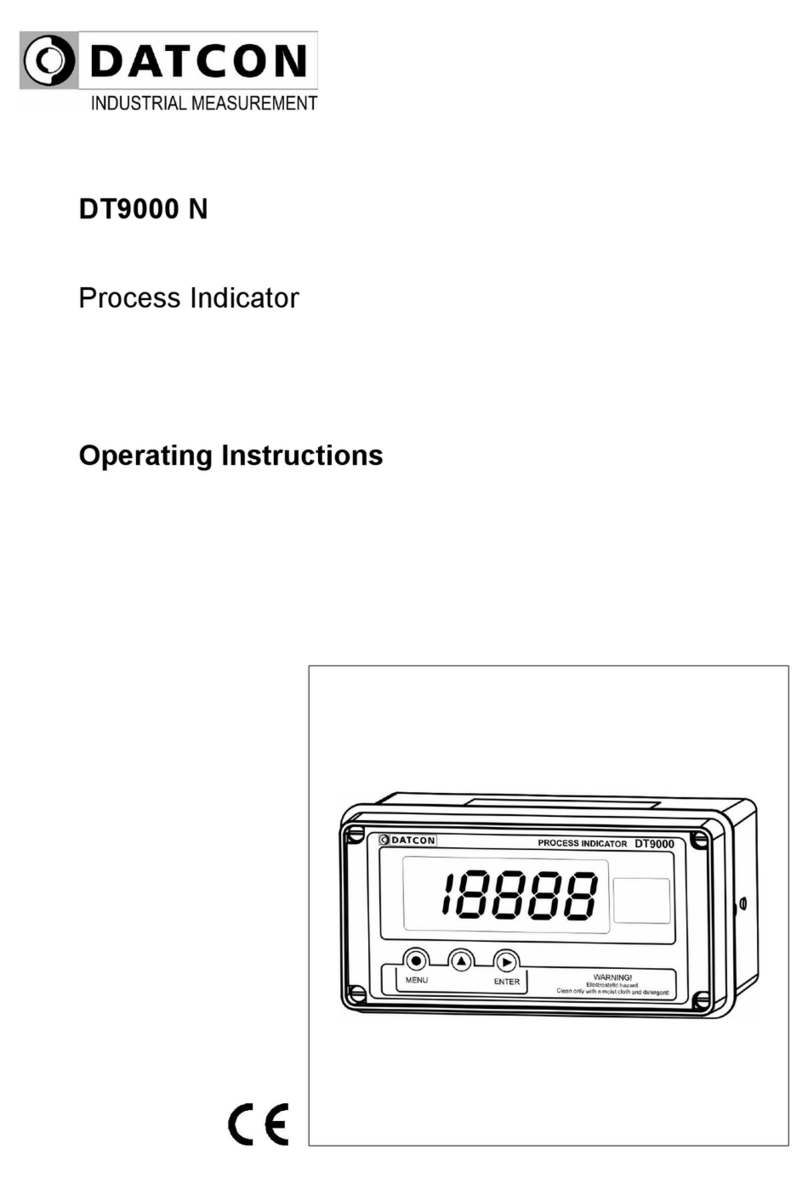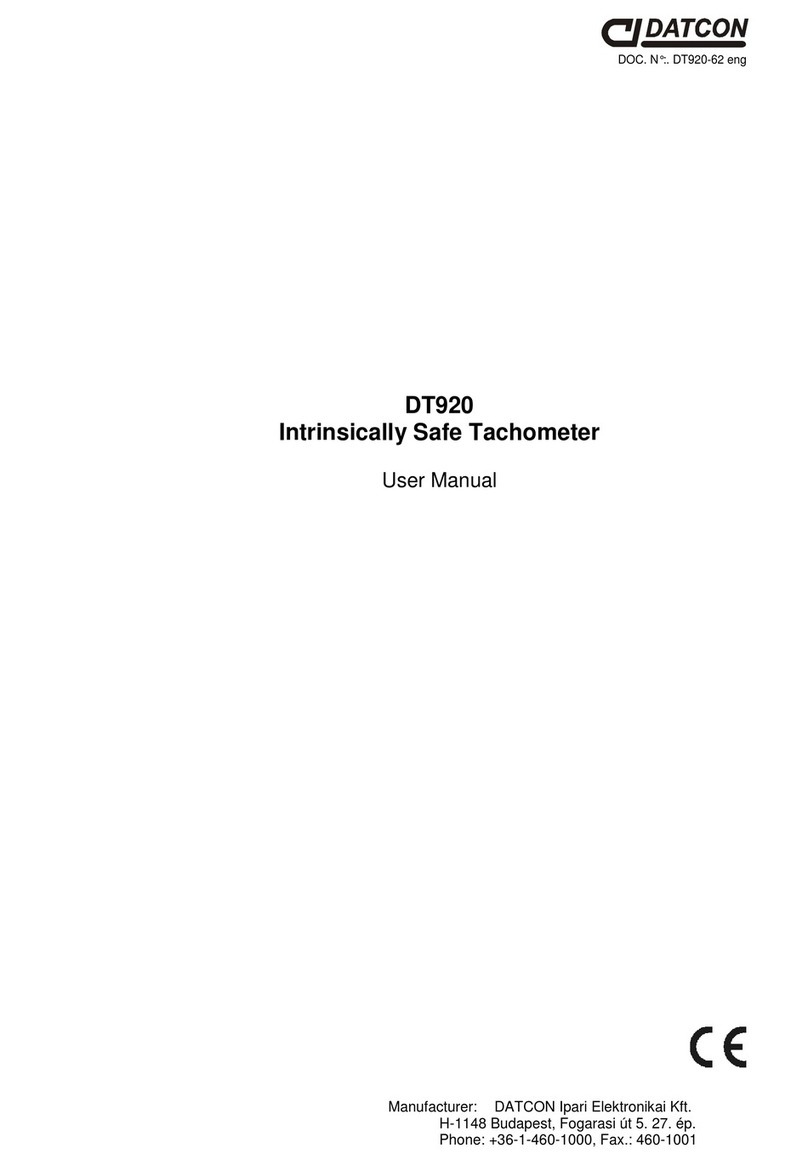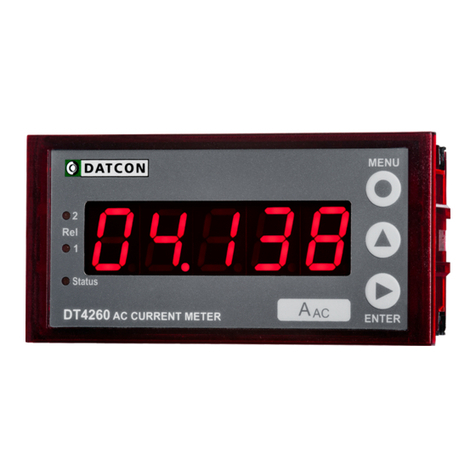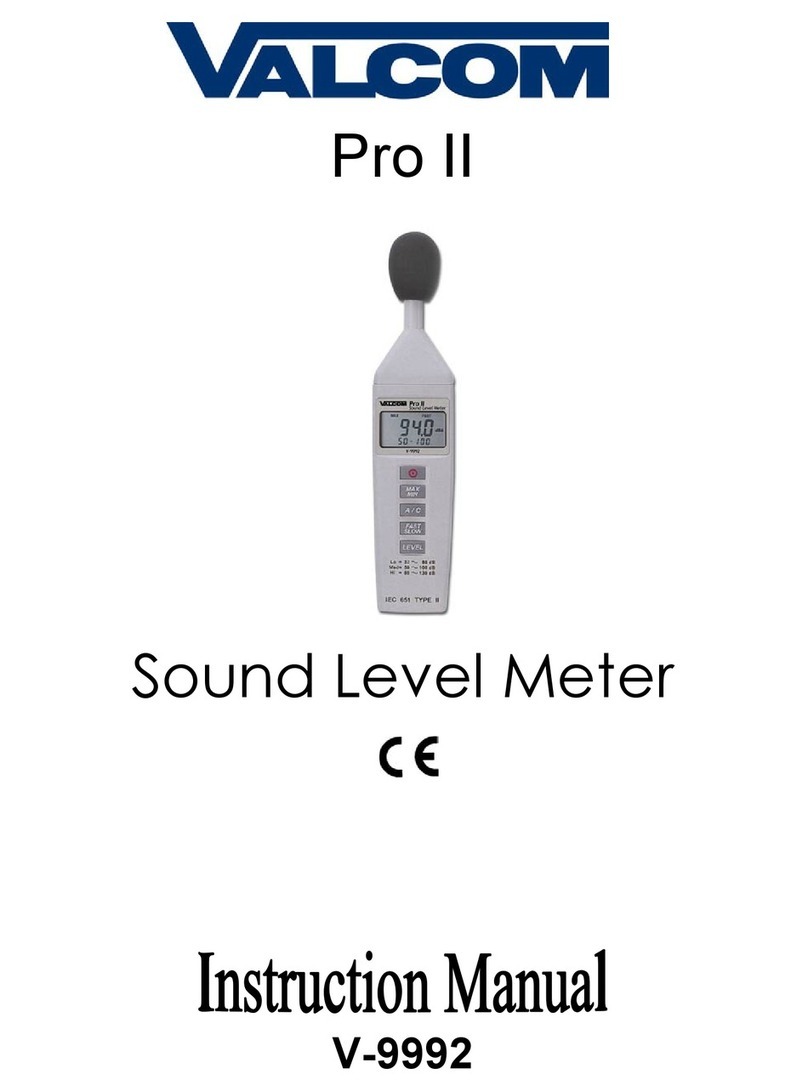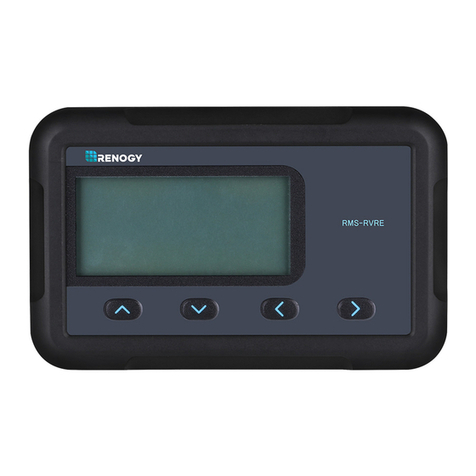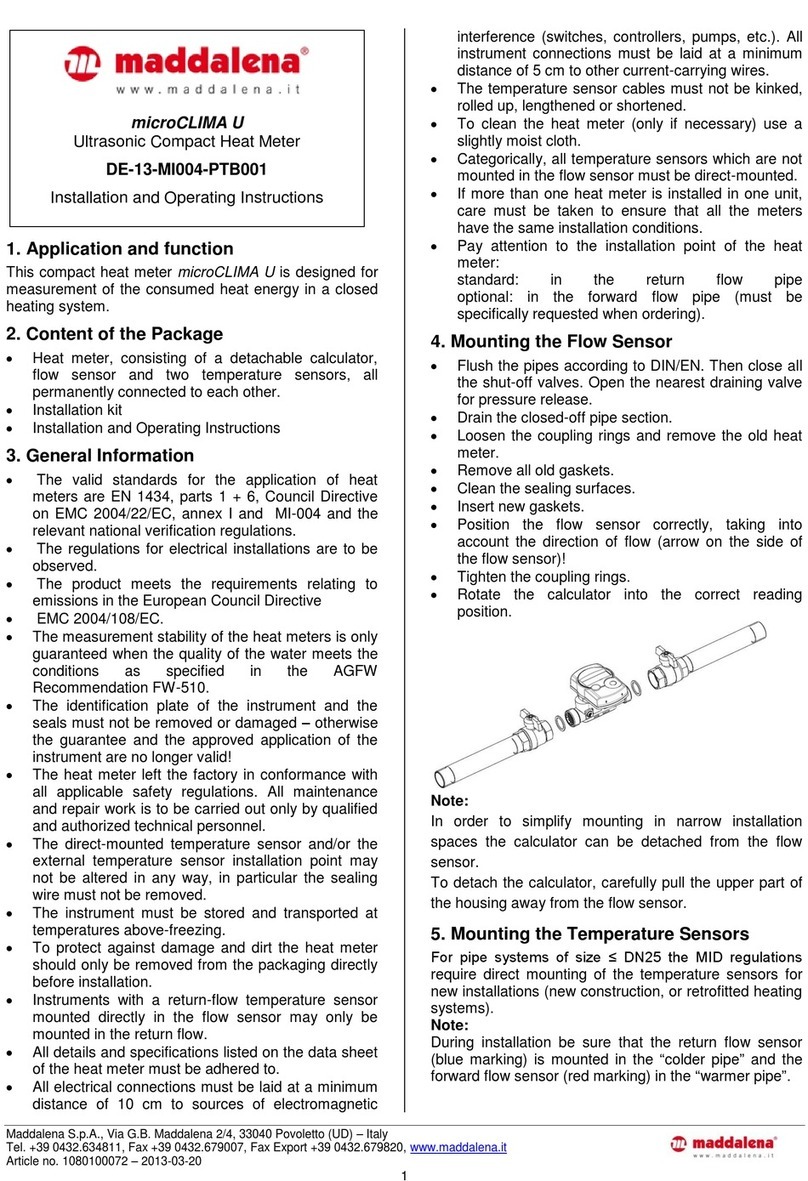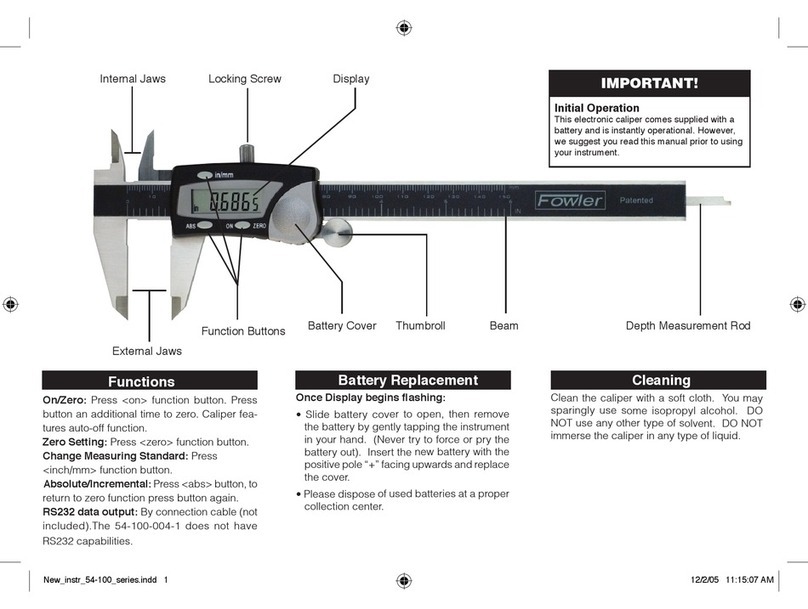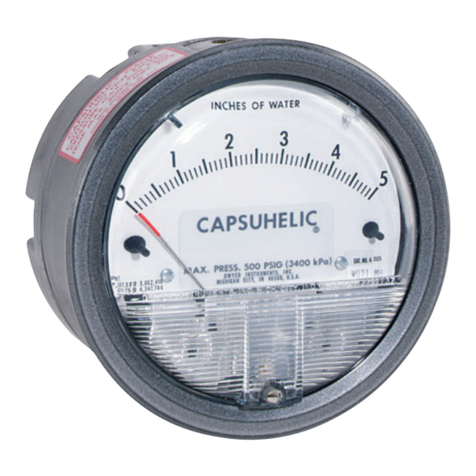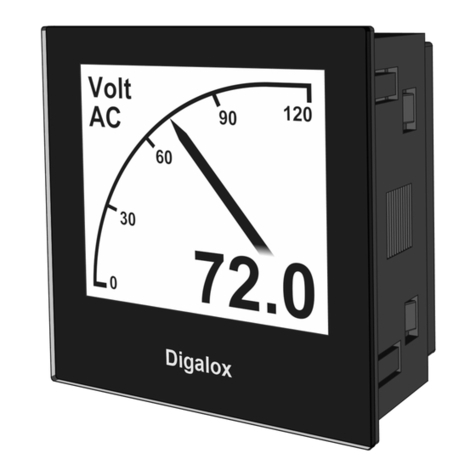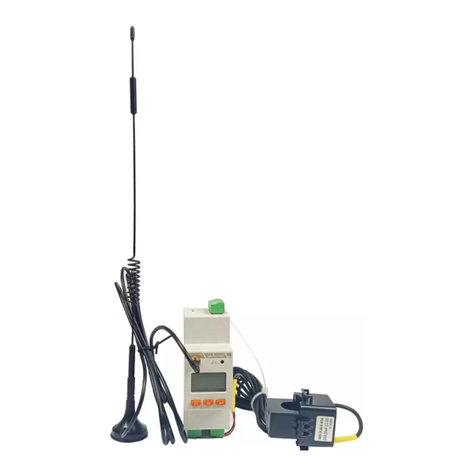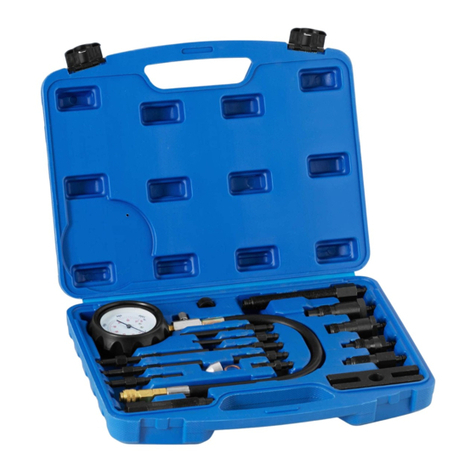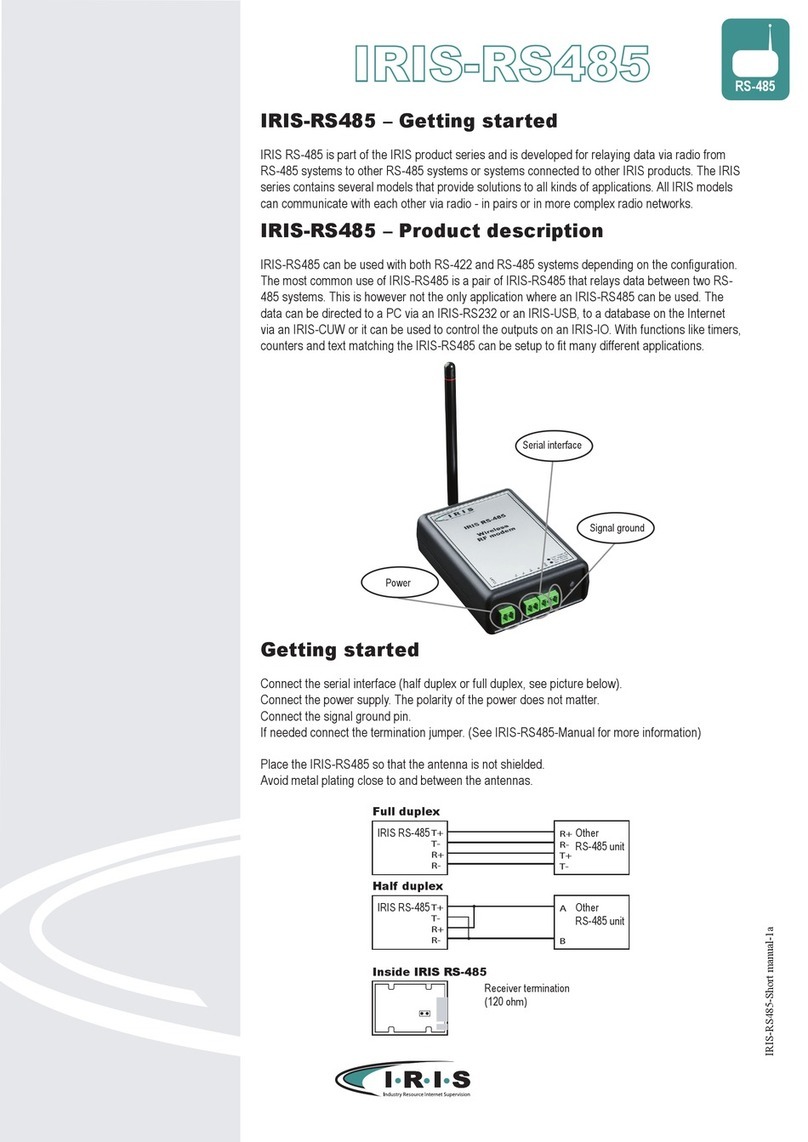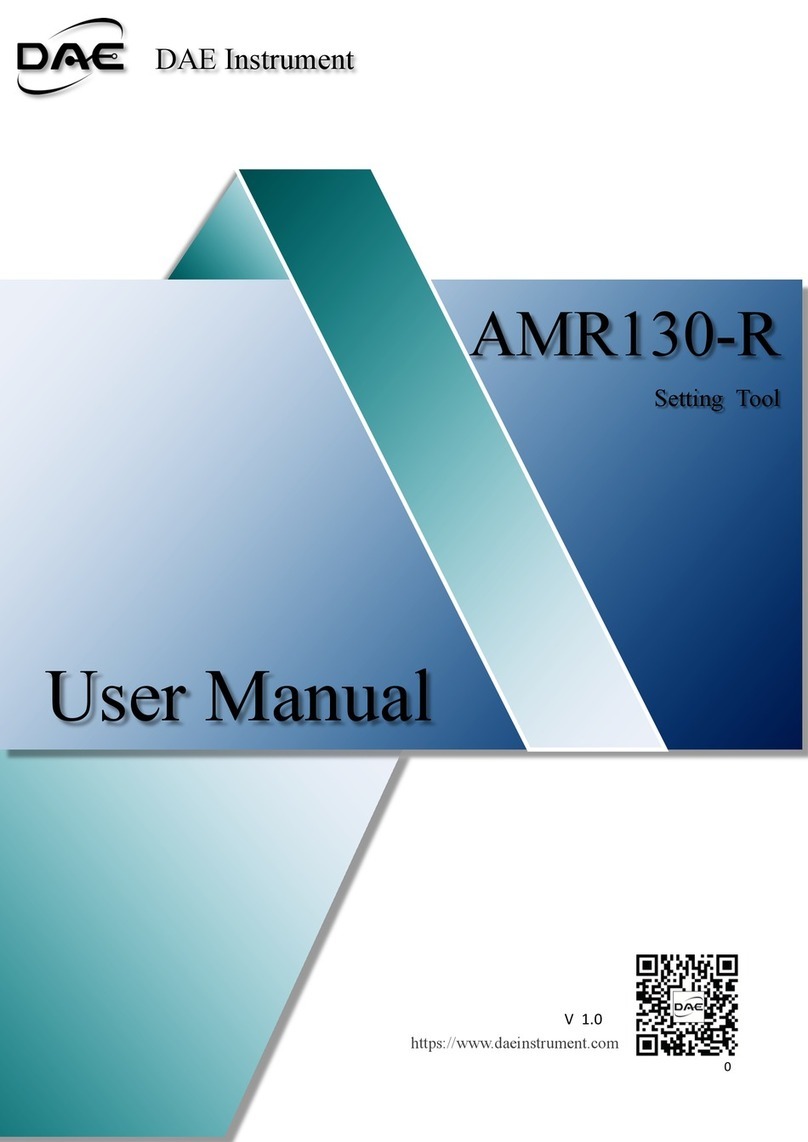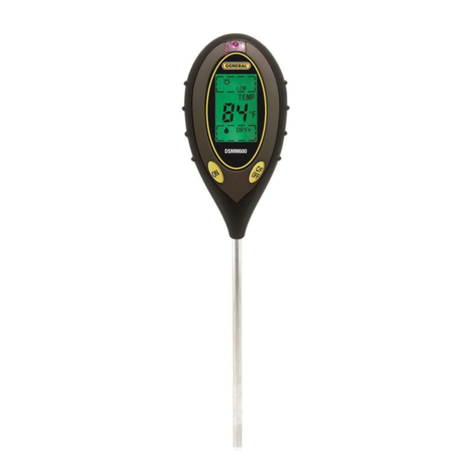Datcon DT4200 User manual

DT4200
Process Indicator
Operating Instructions

DT4200
2 20181113-V0
Contents
1. About this document .....................................................4
1.1. Function ................................................................................... 4
1.2. Target group............................................................................. 4
1.3. Symbolism used....................................................................... 4
2. For your safety ...............................................................5
2.1. Authorised personnel ............................................................... 5
2.2. Appropriate use........................................................................ 5
2.3. Warning about misuse ............................................................. 5
2.4. General safety instructions....................................................... 5
2.5. CE conformity........................................................................... 5
2.6. Environmental instructions ....................................................... 5
3. Product description .......................................................6
3.1. Delivery configuration............................................................... 6
3.2. Principle of operation ............................................................... 7
3.3. Adjustment ............................................................................... 8
3.4. Storage and transport .............................................................. 8
4. Mounting.........................................................................9
4.1. General instructions ................................................................. 9
4.2. Main dimensions of the instrument .......................................... 9
4.3. Mounting ................................................................................ 10
5. Connecting ...................................................................12
5.1. Preparing the connection ....................................................... 12
6. Display and manual controls ......................................16
6.1. The first start-up ..................................................................... 16
6.2. Characters and mnemonics appearing on the display ........... 17
6.3. Manual controls...................................................................... 20

DT4200
20181113-V0 3
7. Setting-up .....................................................................23
7.1. Typing the code (password) in ............................................... 23
7.2. The menu ............................................................................... 25
7.3. Display modes of limit output status (01. menu item) ............ 26
7.4. Setting up the limit outputs (02. and 03. menu items)............ 28
7.5. Limit output alarm mode......................................................... 34
7.6. Decimal point position (04. menu item).................................. 36
7.7. The physical value assigned to 4 mA (05. menu item) .......... 37
7.8. The physical value assigned to 20 mA (06. menu item) ........ 39
7.9. The number of averaged measurements (07. menu item)..... 41
7.10. Display refresh time (08. menu item) ................................... 43
7.11. Tests (09. menu item) .......................................................... 45
7.12. Changing the user code (10. menu item)............................. 47
7.13. Changing the supervisor code (11. menu item) ................... 49
7.14. Display operating modes (12. menu item) ........................... 51
7.15. Disable displaying the leader zeros (13. menu item) ........... 53
7.16. Clear minimum and maximum values (14. menu item)........ 55
7.17. Resetting the default settings (15. menu item)..................... 56
8. Fault rectification .........................................................57
8.1. Fault finding............................................................................ 57
8.2. Repairing................................................................................ 57
9. Dismounting .................................................................57
9.1. Dismounting procedure .......................................................... 57
9.2. Disposal ................................................................................. 57
10. Appendix.....................................................................58
10.1. Technical specifications ....................................................... 58
10.2. Application example ............................................................. 60
10.3. Error messages.................................................................... 61
10.4. Messages of critical errors ................................................... 62
10.5. Description of the menu items.............................................. 63
10.6. Messages and error messages during setting up ................ 67
10.7. Setting up the instrument (Example).................................... 68
10.8. The limit outputs (training material)...................................... 70

DT4200
4 20181113-V0
1. About this document
1.1. Function
This operating instructions manual has all the information
you need for quick set-up and safe operation of DT4200.
Please read this manual before you start setup.
1.2. Target group
This operating instructions manual is directed to trained
personnel. The contents of this manual should be made
available to these personnel and put into practice by them.
1.3. Symbolism used
Information, tip, note
This symbol indicates helpful additional information.
Caution, warning, danger
This symbol informs you of a dangerous situation that could
occur. Ignoring this cautionary note can impair the person
and/or the instrument.
•
List
The dot set in front indicates a list with no implied sequence.
→
Action
This arrow indicates a single action.
1
Sequence
Numbers set in front indicate successive steps in a
procedure.

DT4200
20181113-V0 5
2. For your safety
2.1. Authorised personnel
All operations described in this operating instructions
manual must be carried out only by trained and authorised
specialist personnel. For safety and warranty reasons, any
internal work on the instruments must be carried out only by
DATCON personnel.
2.2. Appropriate use
The DT4200 is a 4-20 mA loop-powered process indicator.
Detailed information on the application range of the DT4200
is available in chapter „Product description”.
2.3. Warning about misuse
Inappropriate or incorrect use of the instrument can give rise
to application-specific hazards, or demage to system
components through incorrect mounting or adjustment.
2.4. General safety instructions
The DT4200 is a high-tech instrument requiring the strict
observance of standard regulations and guidelines. The
user must take note of the safety instructions in this
operating instructions manual, the country-specific
installation standard as well as all prevailing safety
regulations and accident prevention rules.
2.5. CE conformity
A DT4200 is in conformity with the provisions of the
following standards:
EN 61326:2000 (EMC)
2.6. Environmental instructions
Protection of the environment is one of our most important
duties.
Please take note of the instructions written in the following
chapters:
•Chapter 3.4. Storage and transport
•Chapter 9.2. Disposal

DT4200
6 20181113-V0
3. Product description
3.1. Delivery configuration
Delivered items The scope of delivery encompasses:
•DT4200
•1 pc. panel sealing (1)
•2 pc. mounting clamps (enclosed in a nylon bag)
•documentation:
this oparating instructions manual
certification
warranty
The instrument is built from the following main parts:
Main parts
1. instrument case

DT4200
20181113-V0 7
3.2. Principle of operation
Area of application DT4200 is an process indicator enable linear process
variables to be displayed.Two isolated outputs are available
with different operating modes for limit signaling or for
simple control purposes.
Use the enclosed seal between the instrument and the
panel when mounting the instrument to assure IP 65 from
the front.
Operating principle
The 4-20 mA current flows through a measuring resistor
and is converted by a 16 bit A/D converter into digital value.
The digital value is processed by a microcontroller. The use
r
may set up the the configuration parameters: scaling,
decimal point position, display refresh rate, signal filtering,
limit modes, limit values, etc. through the front panel
membrane keypad and the parameters stored in EEPROM.
A two level password protects the settings from
unauthorised changes.
The 4 ½-digit liquid crystal display make process variables
easily visible at a distance. A label defining the appropriate
engineering unit may be attached to the right of the display.
DT4200 has two optically isolated transistor outputs for limit
signaling or for simple control purposes.
Power supply DT4200 is loop-powered from 4-20 mA signal, dropping less
than 2 V at 20 mA.

DT4200
8 20181113-V0
3.3. Adjustment
DT4200 can be adjusted through the 3 button front panel
keypad. All configuration parameters are stored in the
instrument EEPROM for unlimited period of time, even
when the loop current beeng switched off.
In factory setting the DT4200 displays the 4-20 mA loop
current with a resolution of three decimals.
The instrument doesn’t need any internal adjustment.
3.4. Storage and transport
This instrument should be stored and transport in places
whose climatic conditions are in accordance with Chapter
10.1. Technical specifications, as described under the
title: Environmental conditions.
The packaging of DT4200 consist of enviroment-friendly,
recyclable cardboard is used to protect the instrument
against the impacts of normal stresses occurring during
transportation. The corrugated cardboard box is made from
environment-friendly, recyclable paper. The inner protective
material is polyfoam and nylon, which should be disposed of
via specialised recycling companies.

DT4200
20181113-V0 9
4. Mounting
4.1. General instructions
Use the enclosed seal between the instrument and the
panel when mounting the instrument to assure IP 65 from
the front.
Mounting positions
Select a mounting position you can easily read the display
reach for mounting and connecting the instrument and that
minimises the hazard of water, dust or dump getting into the
instrument.
4.2. Main dimensions of the instrument

DT4200
10 20181113-V0
4.3. Mounting
The instrument is housed in a DIN standard 96 x 48 x 50
mm ABS case. It can be fix in the panel with the two
enclosed mounting clamps.
Preparatory steps
Dimensions of panel
cutout
1. Cut-out the panel according to the figure shows above.
The cut-out needs special tools, it must be carried out by
trained specialist personnel.

DT4200
20181113-V0 11
Mounting with the
mounting clamps
2. Put on the enclosed seal onto the instrument case from
the rear side and fit it to the instrument holding frame
(Figure step 2).
3. Put the instrument into the prepared cut-out until it
possible and check the fitting of the seal between case and
mounting surface.
4. Put one of the enclosed mounting clamp onto the tip of a
screwdriver (A) and put the clamp with the help of the
screwdriwer into the hole on the side of the instrument.
5. Push the mounting clamp with your finger tip as far as
you can while keeping the case in it’s position.
Repeat the 4., 5. steps with the other clamp.
Please do not exercise forces higher than necessary, as it
may cause damages to the clamp.

DT4200
12 20181113-V0
5. Connecting
5.1. Preparing the connection
Always observe the following safety instructions:
• Connect or disconnect only in the complete absence of
line voltage
• Take note the data concerning on the
overcurrent protection in installation.
• Use only a screwdriver with appropriate head
Select connecting
cable
Preparing cables
Take note the suitability of the connecting cable
(wire cross-section, insulation, etc.).
You may use either solid conductor or flexible conductor.
In case of using flexible conductor use crimped wire end.
In case of mains connection the wire cross-section should
be 0.25-1.5 mm2.
In case of connection communication cables take note the
concerning prescriptions (www.modbus.org).
It’s an important rule that the power cables and signal
cables should lead on a separate way.
Prepare the cable for the connection.
Strip approx. 8 mm insulation.
In case of using flexible cable, use crimped wire end.
Wiring plan, connecting
the DT4200 as a terminal
device:
(see also “Application
example”)
Be careful the polarity of
the cable.

DT4200
20181113-V0 13
Connecting the cables •The DT4200 is situated in the „middle” of the current loop.
In this case one cable comes from the signal source and
another cable goes to the processing unit(s).
The following figure shows this case.
Wiring plan, connecting
the instrument as an
intermediate device
(see also “Application
example”)
Be careful the polarity of
the cables.
Wiring plan, connecting
the limit outputs
(see also “Application
example”)
Be careful the polarity of
the cables.

DT4200
14 20181113-V0
Make sure before connection that the current loop is
switched off.
The push-in direct connector assemblies used allow a fast
connection of the cables.
Their proper usage is shown by the following figure:
Connecting the cables
into the terminal
assemblies
1. Push the stripped cable-end until it possible into the
terminal assembly. In the case of flexible cable-ends, you
can facilitate opening the connection part by pushing down
the white button.
2. By pushing the wire in, the self-closing connection is
being established. Check it by pulling it outwards slightly.
(3. When you disassemble the cable, push down the white
button by a screwdriver, and pull the cable-end out.)
There is no need to use great force for pushing the cable in,
neither for removal. The button can be pushed down easily.
Please do not exercise forces higher than necessary, as it
may cause damages to the terminal assembly.

DT4200
20181113-V0 15
Finishing step 1. Check if the cables are connected properly (have you
connected all the cables; have you connected them to the
right place; is the connection stable; do not the cable-ends
touch each other).
Checking the
connections
After you have completed the connections, put the current
loop under voltage, in such a way that the nominal 4-20 mA
current should flow in the loop. If the connection is correct,
numbers or a characters has to appear on the display.
If nothing appears on the display, most probably there is no
current flowing in the loop. Check if the current is present by
using an ampermeter. If the current value is in the
4-20 mA range, check if everything has been done in
accordance with Chapter 5.1 Connecting into the current
loop.
You may check the voltage at the pins 5and 6of the
terminal assembly, the voltage should be a value between
1.5 and 2.2 V, while pin 6is the positive one,
if the connection is correct. In the case of reverse polarity,
the voltage value is less than 1 V, and 5is the positive pin.
With this you have completed the connection of DT4200.

DT4200
16 20181113-V0
6. Display and manual controls
6.1. The first start-up
The display
The display is indicated by the arrow (1)
After the instrument has been installed and connected into
the current loop, first you see on the display the type of
instrument: , , than the current in mA, with a
resolution of 3 decimals.
In the case of an error
message
If anything else appears on the display instead of the
numbers showing the current value (e.g. a message with
blinking letters), then it is an error message of the
instrument.
In order to define the error more accurately, please go to
Chapter 10.3. Error messages or 10.4. Messages of
critical errors, found at the end of this Manual, in the
Appendix.

DT4200
20181113-V0 17
6.2. Characters and mnemonics appearing on the
display
DT4200 has a 7-segment type display. It means that
maximum 7 bars are used to form each characters. The
numbers can be read easily, some of the letters, marks
however, looks unusual:
= A, = B, = C, = D, = E, = F, = G,
= H,= I, = J, = K, = L, = M, = N,
= O, = P, = Q, = R, = S, = T, = U,
= V, = W, = X, = Y, = Z
All mnemonics (code words) presented on the display
comes from English expressions in abbreviated form.
The following part gives a list of the possible mnemonics
and their meaning. The left-side column shows the
characters appearing on the display. The right-side column
gives first the meaning, then the full English word in
brackets and, after the hyphen, and explanation may be
given.
Login text
DT - Datcon instrument
4200 - Type of the instrument
Error messages
A/D overflow (Error: A/D Overflow)
Loop current < 3.5 mA
Loop current > 20.5 mA
Scaling error (Error: Scale)
Underflow (Error: Underflow)
Overflow (Error: Overflow)
Minimum-maximum (Error: Missing Minimum-Maximum)

DT4200
18 20181113-V0
Messages of critical
errors
A/D failure (Service: AD Hardware)
EEPROM failure (Service: EEPROM Hardware)
EEPROM write error (Service: EEPROM Protected)
Calibration error (Service: Calibration)
Default factory settings (Service: Default Factory Settings)
The last saving was not successful (Error: Last Save)
During measuring
20000 - The value presented on the display is twenty-
thousand
-20000 The value presented on the display is minus twenty-
thousand
During code writing
Code? (Code)
Bad Code (Bad Code)
A User login took place (User)
A Supervisor login took place (Supervisor)
During setting up
The typed number is lower than allowed (Low Limit)
The typed number is higher than allowed (High Limit)
Low numeric value not possible to display
High numeric value not possible to display
Re-type it please (Re-type)
Automatic escaping (Auto Escape) - after 1 minute
Exit from the setting (Exit)
The instrument is making calculations, please wait
(Busy)
The requested operation has been completed (Ready)
The saving of the settings is being done (Save)
No, I don’t want this menu (No)
Yes, the menu can be started (Yes)

DT4200
20181113-V0 19
Minimum-maximum
values on the display
(▲button)
Minimum value (MINimum)
Maximum value (MAXimum)
Firmware version (FiRMwareE)
Low numeric value not possible to display
High numeric value not possible to display
Limit values on the
display
Both limit outputs are switched off
The limit output No.1 is switched on (Limit 1)
The limit output No.2 is switched on (Limit 2)
Both limit outputs are switched on

DT4200
20 20181113-V0
6.3. Manual controls
DT4200 can be adjusted by the membrane push-buttons
indicated by (1), (2), and (3) in the drawing.
Functions of the push-buttons during measurement
(1) MENU button: Entering the menu
When you push this button, the device will ask for a
password (code) in accordance with Chapter 7.1. Typing
the code (password) in, when the right code has been
given, it enters into the menu. During this time the
measurement is suspended, and the limit outputs don’t
change. If no keys are pressed for a period of one minute,
the instrument restarts and the measurement goes on.
(2) ▲button: displaying minimum value, maximum value,
firmware version. The above values and the firmware
version remains on the display as long as the button is
being pressed. During this time the measurement is
suspended, and the limit outputs don’t change.
Table of contents
Other Datcon Measuring Instrument manuals
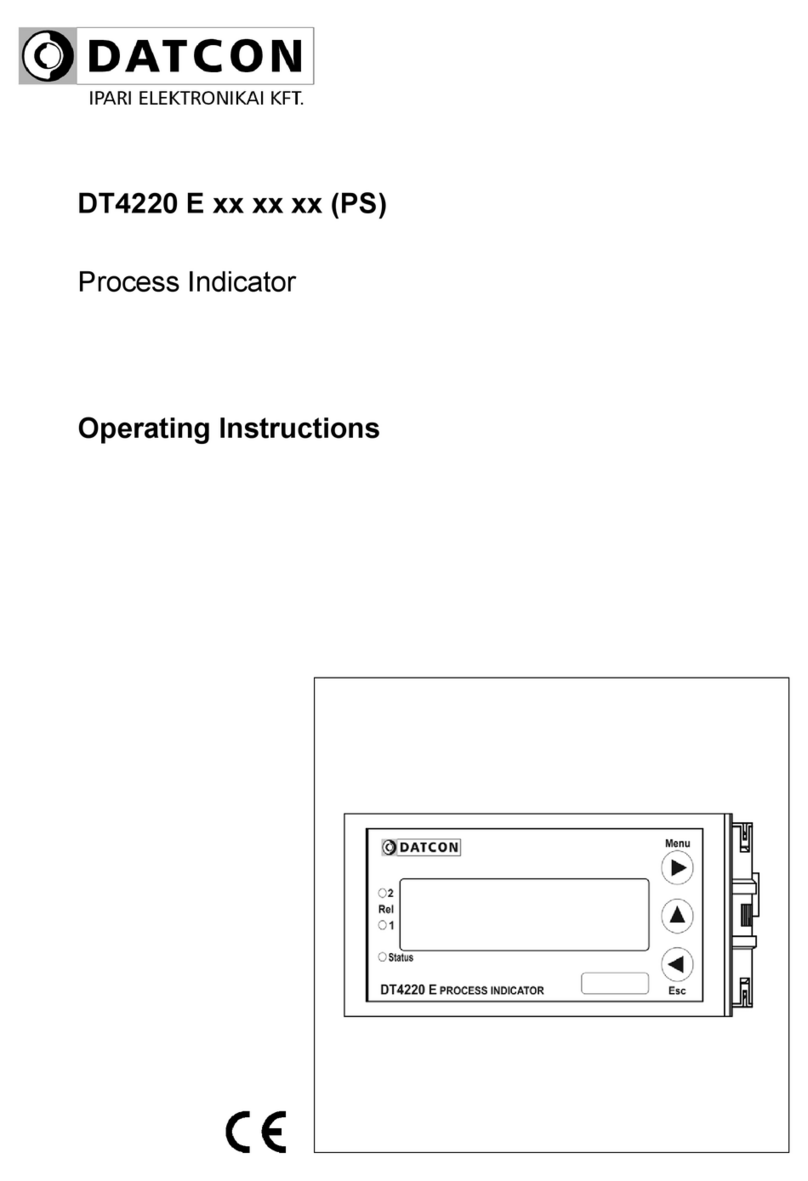
Datcon
Datcon DT4220 E Series User manual
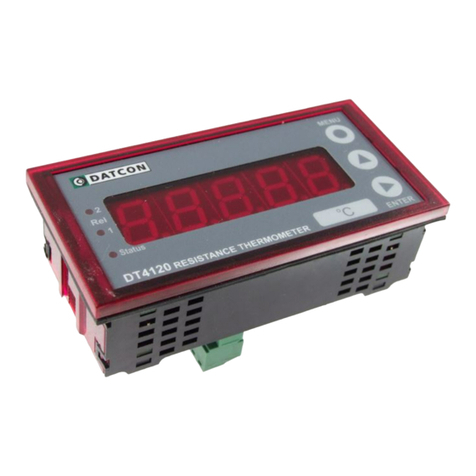
Datcon
Datcon DT4120 Series User manual

Datcon
Datcon DT7000 User manual
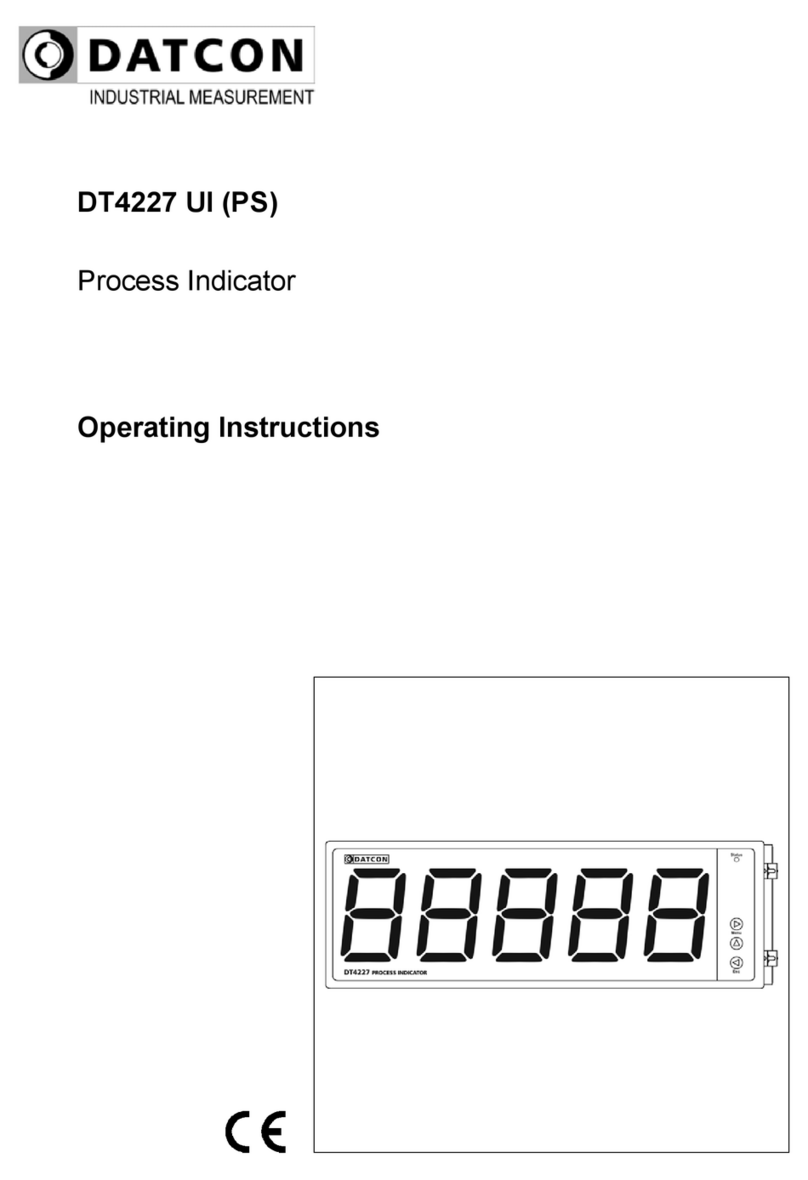
Datcon
Datcon DT4227 UI User manual
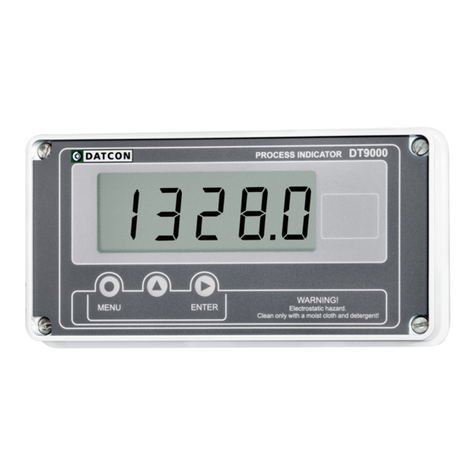
Datcon
Datcon DT9000 User manual
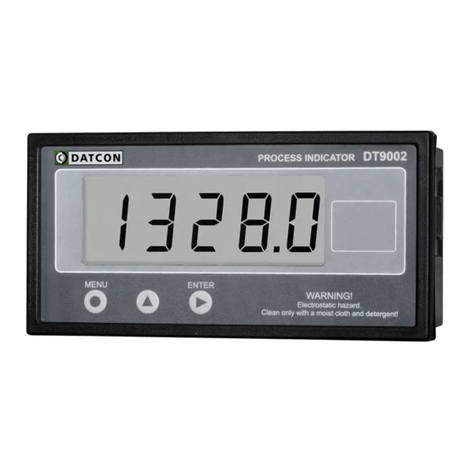
Datcon
Datcon DT9002 User manual
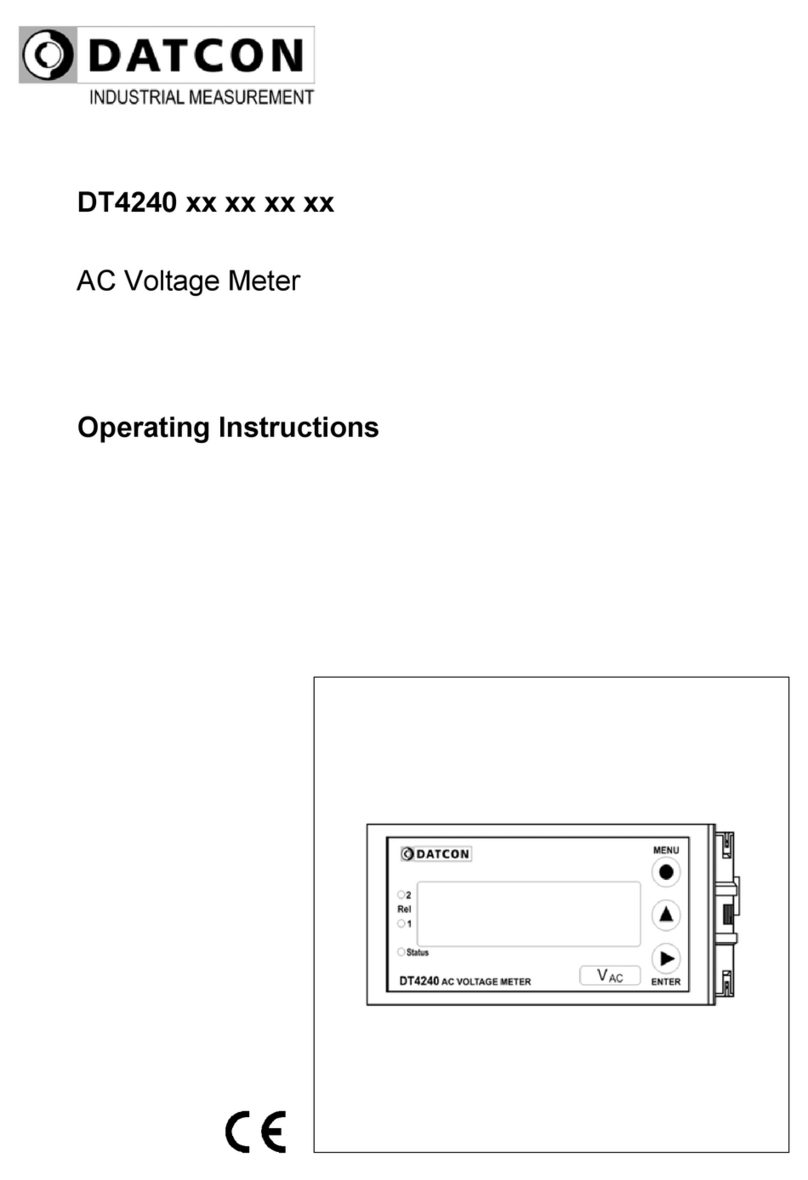
Datcon
Datcon DT4240 Series User manual
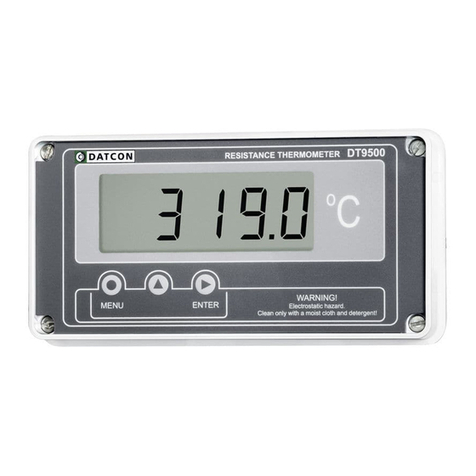
Datcon
Datcon DT9500 User manual
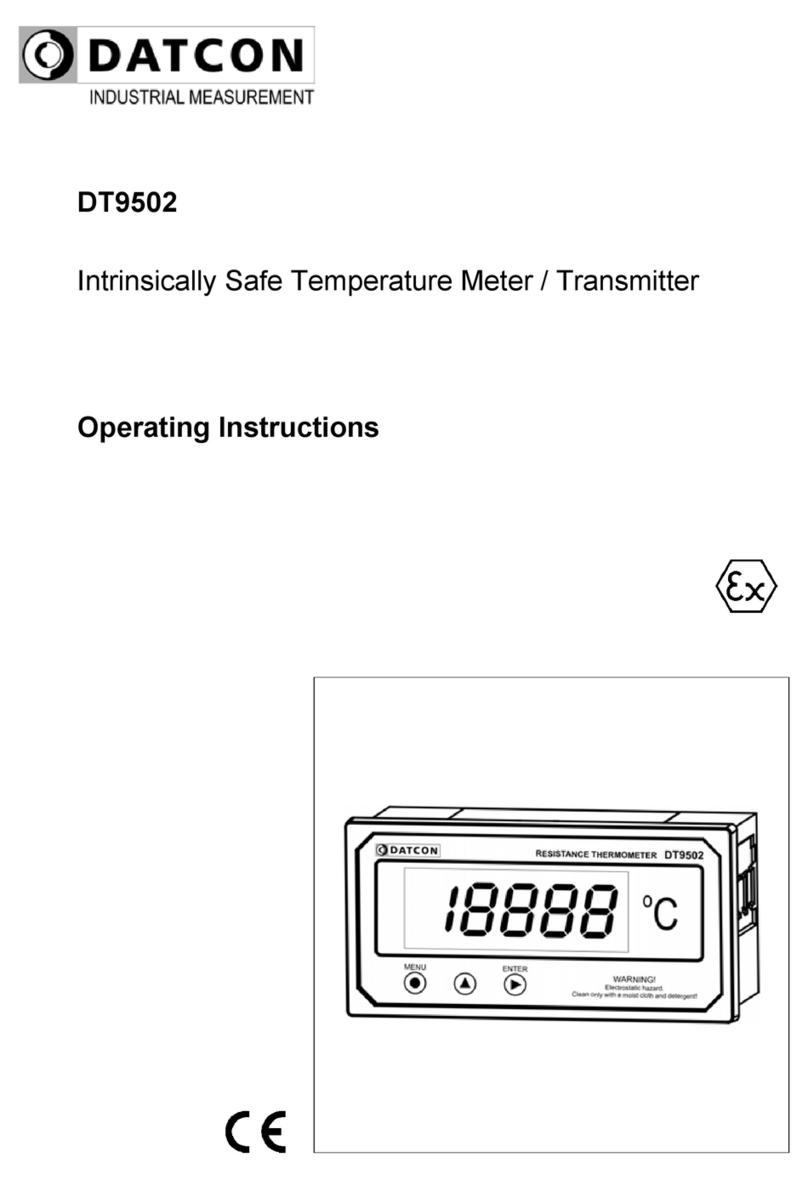
Datcon
Datcon DT9502 User manual
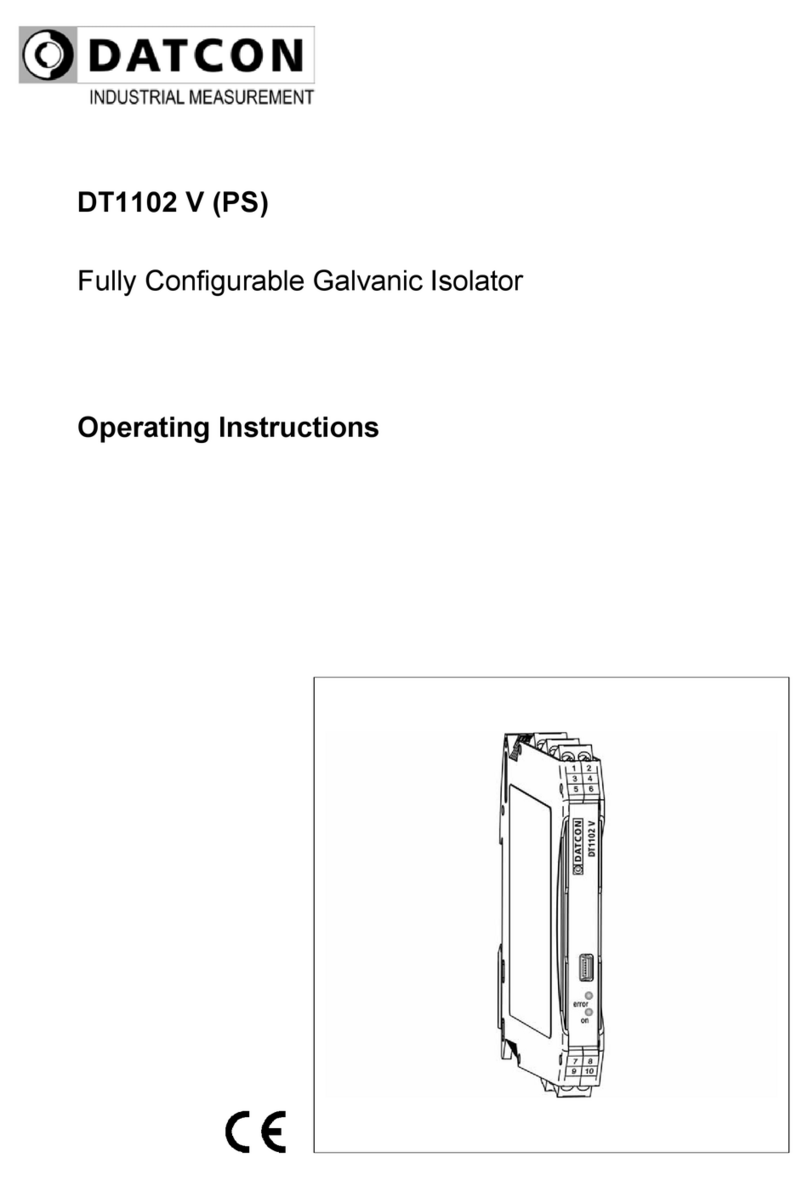
Datcon
Datcon DT1102 V User manual
